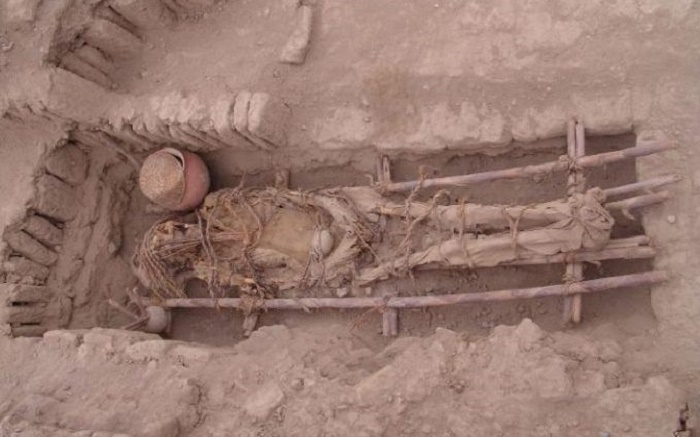Scientists have reconstructed their genetic history from 92 `pre-Columbians` between 500 and 8,600 years old.
They included the famous mummy called La Doncella, or The Maiden, a teenage girl who died more than 500 years ago in a ritual sacrifice in the Andes Mountains.
The girl and two other children were left on a mountaintop to succumb to the cold as offerings to the gods, according to the archaeologists who found them in Argentina in 1999.
The study, published in Science Advances, reveals a striking absence of the pre-Columbian genes in modern indigenous Americans, showing extinction of these lineages with the arrival of the Spaniards.
Dr Bastien Llamas, of the University of Adelaide, said: "Surprisingly, none of the genetic lineages we found in almost 100 ancient humans were present, or showed evidence of descendants, in today`s indigenous populations.
"This separation appears to have been established as early as 9,000 years ago and was completely unexpected, so we examined many demographic scenarios to try and explain the pattern.

Human remains in the burial site (500-700 AD) uncovered at the Huaca Pucllana great adobe pyramid, in the city of Lima, Peru
"The only scenario that fit our observations was shortly after the initial colonisation, populations were established that subsequently stayed geographically isolated from one another, and a major portion of these populations later became extinct following European contact.
"This closely matches the historical reports of a major demographic collapse immediately after the Spaniards arrived in the late 1400s."
The research team, which included members from the University of California at Santa Cruz and Harvard Medical School, studied maternal genetic lineages by sequencing whole mitochondrial genomes.
This is DNA that is only passed through the generations by the mother, which was extracted from the bones and teeth of the mainly South American mummies and skeletons.
Columbus has been blamed for bringing tuberculosis to the New World.
Once established in South America, it moved north and infected people in North America before European settlers arrived with new strains.
Previous research has suggested roughly 95 per cent of Native Americans were killed by European diseases, accounting for around 19 million people.
Tuberculosis is one of the most persistent and deadliest infectious diseases in the world, killing one to two million people each year.
The ancient genetic signals also provide a more precise timing of the first people entering the Americas, via the Beringian land bridge that connected Asia and the north-western tip of North America during the last Ice Age.
Professor Alan Cooper, director of the Australian Centre for Ancient DNA (ACAD) at the University of Adelaide, said: "Our genetic reconstruction confirms the first Americans entered around 16,000 years ago via the Pacific coast, skirting around the massive ice sheets that blocked an inland corridor route which only opened much later.
"They spread southward remarkably swiftly, reaching southern Chile by 14,600 years ago."
Dr Lars Fehren-Schmitz, of the University of California at Santa Cruz, said: "Genetic diversity in these early people from Asia was limited by the small founding populations which were isolated on the Beringian land bridge for around 2,400 to 9,000 years.
"It was at the peak of the last Ice Age, when cold deserts and ice sheets blocked human movement, and limited resources would have constrained population size.
"This long isolation of a small group of people brewed the unique genetic diversity observed in the early Americans."
Dr Wolfgang Haak, formerly at ACAD and now at the Max Planck Institute for the Science of Human History, Jena, Germany, said: "Our study is the first real time genetic record of these key questions regarding the timing and process of the peopling of the Americas.
"To get an even fuller picture, however, we will need a concerted effort to build a comprehensive data set from the DNA of people alive today and their pre-Columbian ancestors, to further compare ancient and modern diversity."
















































